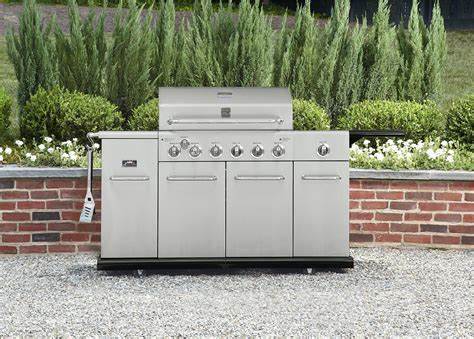
This article provides comprehensive insights into the constituent parts of a gas grill, focusing on frequently replaced components. Gas grills, while beloved for their culinary convenience, are not impervious to wear and tear. When such issues arise, a profound understanding of the grill’s internal mechanisms, coupled with the knowledge of how to replace faulty parts, becomes indispensable. While lesser-quality, generic grills may lack an extensive selection of replacement parts, premium manufacturers ensure the availability of replacement components, prolonging the life of your grill. Precisely identifying the gas grill parts for purchase is the inaugural step towards effective grill restoration, as authentic manufacturer-made parts are the most reliable choice. Although generic components may suffice, their compatibility is not guaranteed. This article outlines the most commonly replaced gas grill parts, assisting readers in making informed decisions for grill maintenance.
This section elucidates the pivotal role played by igniters in facilitating the ignition process of gas grills. Situated in close proximity to the burner tubes, igniters harness electrical energy to produce a spark that initiates the combustion of propane or natural gas emanating from the burners. In an era when igniters were absent from gas grills, igniting the gas required manual intervention, necessitating the use of a lighter wand or an extended match.
Commonly, the malfunction of igniters stems from corroded wire connections, rendering them inoperative. Igniters often manifest as the primary components susceptible to failure in gas grills. The remediation typically entails the replacement of either the igniter module or electrode units. It is noteworthy that igniter components are generally tailored to a specific brand and grill type.
This section delves into the vital role of burner tubes within gas grills, elucidating their construction and function. These elongated metal cylinders are characterized by rows of small perforations along their length, facilitating the controlled flow of gas through these apertures. The burning gas, in turn, generates the requisite heat for cooking the food placed above the burners. Notably, burner tubes are susceptible to various forms of deterioration, with corrosion emerging as the most prevalent issue. The thin metal walls of these tubes are particularly prone to rust, potentially leading to the development of substantial rust holes, thereby disrupting the even distribution of gas. To address this, corroded tubes necessitate removal and replacement with new counterparts, seamlessly integrating them into the gas supply manifold. Replacement burner tubes are typically designed for specific grill models, yet they often exhibit compatibility with a diverse range of grill variants.
Grill manifolds, integral components in gas grills, are crucial metal pipe assemblies that serve as the linkage between the gas supply source and the burner tubes. Typically situated at the front of a gas grill, just beneath the burner control knobs and a protective cover, these components are susceptible to corrosion over time. Corrosion compromises their gas transportation capabilities, ultimately posing safety risks.
To address this issue, this paper outlines the comprehensive procedure for manifold replacement. The process necessitates the removal of control knobs and the protective cover, followed by the disconnection of the aged manifold from the burner tubes and gas supply line. Subsequently, the new manifold is seamlessly inserted, restoring vital connections before reassembling the grill’s components. This replacement procedure not only enhances grill safety but also ensures optimal gas flow, thus sustaining the grill’s functionality.
Regulators, essential components in the functioning of gas grills, act as intermediaries connecting propane tanks to the grill system, effectively reducing gas pressure. However, when regulators fail, they may permit gas leakage into the environment or obstruct gas flow, jeopardizing both safety and efficiency. In such scenarios, the replacement of the regulator is paramount.